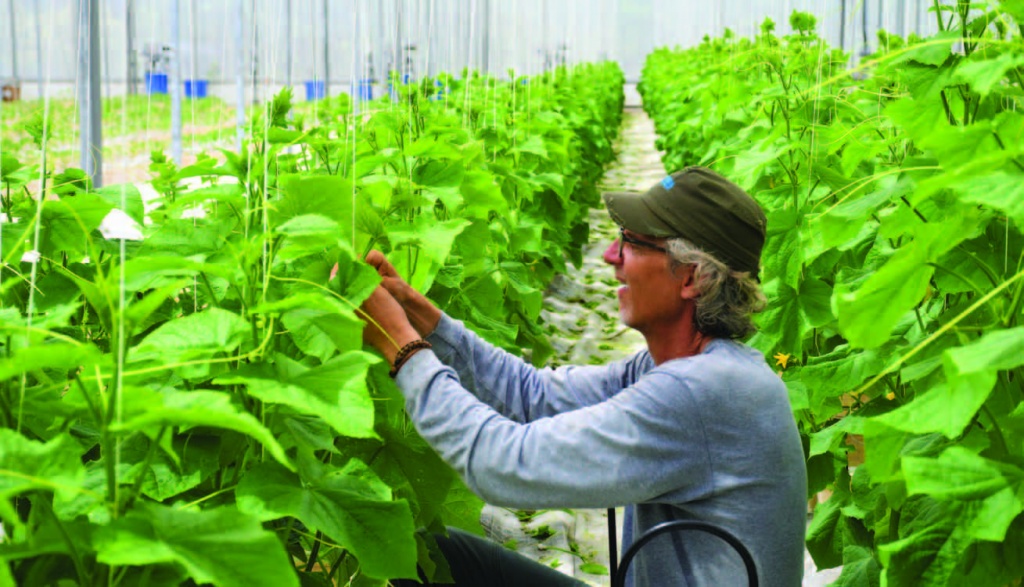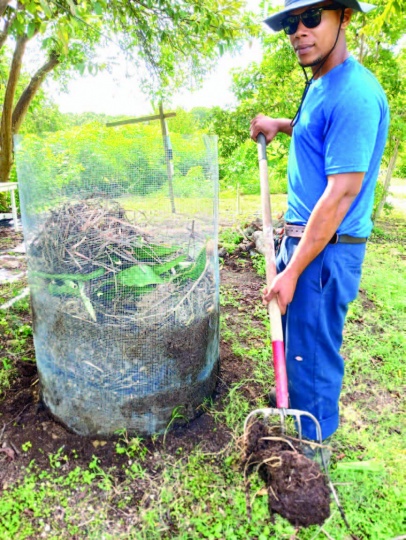
(By Tim Hauber, One Eleuthera Foundation/Center For Training and Innovation)
In our day and age, we look around the world and see so many environmental problems, many of which seem unsolvable. It is rare to find a solution as simple and as impactful as the practice of Regenerative Agriculture. The practice of Regenerative Agriculture brings positive change to our communities and our globe by reducing pollution, reducing poverty, reducing global freshwater use and even stopping or reversing climate change.
Before I delve into what Regenerative Agriculture practices are, which are not complicated, let us take a quick look at our current agricultural practices and how they are impacting the world. Globally, most of our food is currently produced by cutting down forests or grasslands, plowing the soil several times a year, adding fertilizer, water, and pesticides to crops, and once harvested, leaving the field empty until the following growing season.
This is how most of our food has been produced since the introduction of agri-chemicals after the Second World War, and it has caused vast environmental damage. The agricultural sector is one of the largest polluters in the world, causing soil degradation, groundwater pollution, loss of biodiversity, deforestation, pesticide buildup, and greenhouse gas emissions, just to name a few of the many problems caused. There is no doubt that the current model of agricultural production is not sustainable and that we will soon run into significant challenges in feeding the world’s population as we diminish essential resources like soil and fresh water. The problems are vast and complex, but the good news is that regenerative farming practices can stop and even reverse many of these problems.

Regenerative Agriculture is the practice of growing food in a holistic manner that takes into consideration the long-term soil health and fertility. It turns out that soil is a very complex substance that is full of life and biodiversity, something that we have not been taking into consideration over the past 70 years of adding fertilizer and pesticides to our soil. Farmers and scientists have been focusing on the minerals in soil with very little understanding of soil microbiology. We did not realize that a very important part of healthy soil is the microbes, fungi and bacteria that live in the soil. Our practices of plowing and adding synthetic fertilizers and pesticides have been slowly killing off these important microbes. As it turns out, soil microbes play many vital roles in soil health, such as water absorption, nutrient availability, disease resistance, and resistance to erosion. All regenerative farming practices take soil health and ecology into consideration.
There are many farming practices that are considered regenerative, such as no-till farming, composting, crop rotation, cover cropping, reducing pesticides, proper livestock grazing, and agroforestry.
Currently, we import 95% percent of our food. As we seek to rebuild the agricultural sector in The Bahamas and once again produce more of our own food, we are in a great position to develop our farming practices in a more sustainable manner than we would have even 20 years ago. This is possible now that we have a better understanding of regenerative agriculture. We can ensure that moving forward, our growing practices, whether on a large or small scale, take soil health into consideration, enabling us to not only feed ourselves but future generations as well.
At The Farm at CTI (Center for Training and Innovation) in Rock Sound, Eleuthera, we are transitioning many aspects of our farm to more regenerative practices. We have seen improvements in our yields as a result of cover cropping, composting, no/low till, mulching, and the elimination of broad-spectrum pesticides. We are actively developing almost half of our acreage into a regenerative agri-forest system that will serve as a learning model for other farmers throughout the country. The following simple regenerative farming practices have proven beneficial in promoting soil health and produced vibrant, resilient crops on our farm.
Cover Cropping: When our vegetable crops are finished for the season, we immediately plant cover crops such as Sunn Hemp or Sudex Grass to protect and improve soil health over the hot summer months.
Composting: All of our green waste and landscaping trimmings are composted in a variety of compost systems. Composting is a powerful way of enriching your soil with healthy soil microbes as organic matter breaks down.
Mulching: By adding organic matter such as leaves and branches around the base of trees, we increase the water retention and soil quality for the tree’s root zone.
Crop rotation: We are careful not to plant the same crop in the same area year after year. We try to mix in different crops in the same field whenever possible to replenish the soil.
There is little doubt in my mind that the future of sustainable farming in The Bahamas can be achieved by following the basic principles of Regenerative Agriculture. These techniques are not complicated or expensive and are often a return to the more ‘old fashioned’ ways of farming that our ancestors practiced for millennia.
For more information on these farming techniques, feel free to reach out to us here at One Eleuthera Foundation (OEF) and Center for Training and Innovation (CTI) at ctifarm@oneeleuthera.org
